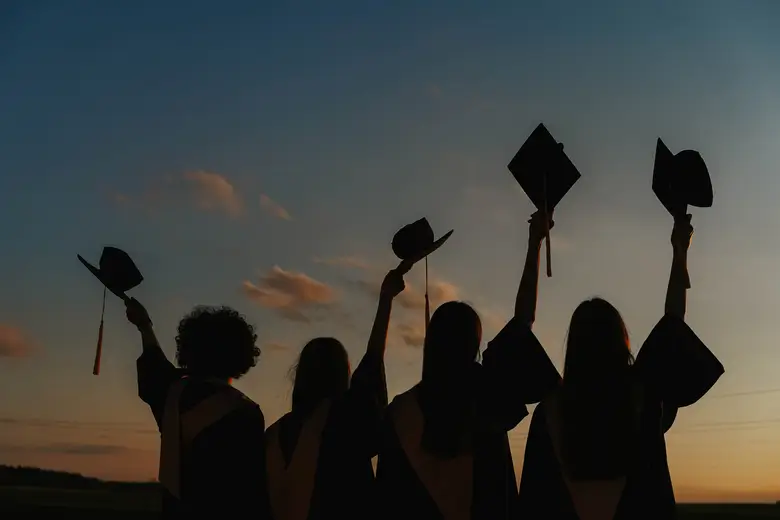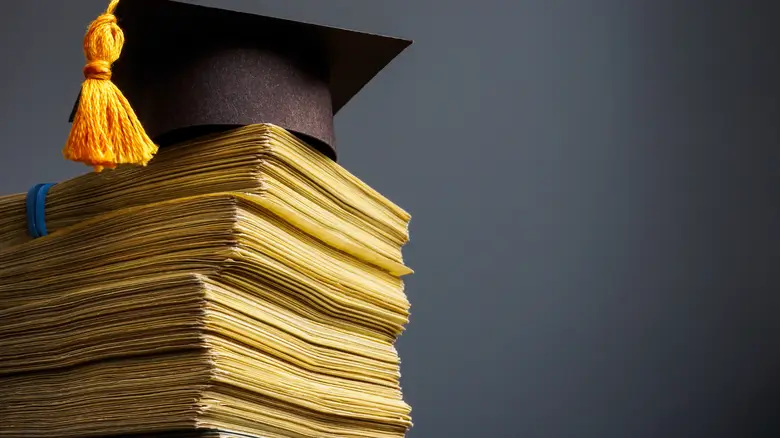
Hispanic Heritage Month, celebrated from September 15 to October 15, offers a moment to honor the profound contributions of Hispanic Americans who have shaped the United States across diverse fields. Their paths through higher education, often marked by resilience and determination, have been pivotal in their success. This article explores the colleges and universities that nurtured some of these trailblazers, highlighting how their academic journeys fueled their impactful careers.
Literary Pioneers and Their Academic Roots
Hispanic American writers have enriched literature with vibrant narratives. Their college experiences provided critical skills and inspiration. Sandra Cisneros and Julia Alvarez stand out as luminaries in this space.
Sandra Cisneros, a Mexican-American author, is renowned for her novel The House on Mango Street. She earned a BA in English from Loyola University Chicago and an MFA in Creative Writing from the University of Iowa. These institutions honed her ability to weave Chicano identity into universal stories.
At Iowa’s Writers’ Workshop, Cisneros found her voice. The program’s rigor pushed her to explore her cultural heritage. Her education shaped her award-winning career, including the 1985 American Book Award.
Julia Alvarez, a Dominican-American writer, attended Middlebury College for her BA and Syracuse University for an MA in Creative Writing. Her novels, like In the Time of the Butterflies, reflect her bicultural experience. Middlebury’s literary community encouraged her storytelling.
Alvarez’s time at Syracuse refined her craft. She credits her professors for fostering her poetic voice. Her education empowered her to become a National Medal of Arts recipient.
Notable Literary Figures and Their Colleges
- Sandra Cisneros: Loyola University Chicago (BA), University of Iowa (MFA)
- Julia Alvarez: Middlebury College (BA), Syracuse University (MA)
- Juan Felipe Herrera: UCLA (BA), Stanford (MA), University of Iowa (MFA)
These institutions provided platforms for cultural expression. Their programs nurtured narrative innovation. Writers like Herrera, the first Mexican-American U.S. Poet Laureate, thrived in such environments.
Trailblazers in Civil Rights and Social Justice
Hispanic Americans have been pivotal in advancing civil rights. Their college educations equipped them with tools to challenge systemic inequities. Figures like Dolores Huerta and Sylvia Mendez exemplify this legacy.
Dolores Huerta, a labor leader, attended San Joaquin Delta College, studying education. Her time there exposed her to the struggles of farmworker communities. This sparked her activism with Cesar Chavez, co-founding the National Farm Workers Association.
Huerta’s college experience, though brief, grounded her advocacy. Her teaching background informed her organizing strategies. She received the Presidential Medal of Freedom in 2012 for her tireless work.
Sylvia Mendez, a civil rights activist, studied nursing at Orange Coast College and California State University, Los Angeles. Her education followed her family’s landmark Mendez v. Westminster case, which desegregated California schools. Her studies fueled her lifelong advocacy.
Mendez’s college training in public health shaped her community engagement. She received the Presidential Medal of Freedom in 2011. Her story underscores education’s role in sustaining activism.
Impact of Education on Advocacy
Colleges provided safe spaces for activists to strategize. Huerta’s exposure to social issues at San Joaquin Delta was pivotal. Similarly, Mendez’s studies amplified her voice in desegregation efforts.
These institutions fostered critical thinking. They empowered advocates to challenge injustices. Education was a catalyst for systemic change.
Leaders in Politics and Law
Hispanic Americans have reshaped U.S. politics and law. Their academic journeys at prestigious institutions laid the foundation for historic achievements. Sonia Sotomayor and Alexandria Ocasio-Cortez are prime examples.
Sonia Sotomayor, the first Hispanic Supreme Court Justice, graduated from Princeton University with a BA in History and Yale Law School with a JD. Princeton’s rigorous academics sharpened her analytical skills. Yale honed her legal expertise.
Sotomayor’s education empowered her to break barriers. Her time at Yale, where she graduated in 1979, prepared her for roles as a federal judge. Her journey inspires countless Hispanic law students.
Alexandria Ocasio-Cortez, the youngest woman elected to Congress, earned a BA in International Relations and Economics from Boston University. Her studies shaped her progressive policies, like the Green New Deal. Boston’s diverse campus fueled her activism.
Ocasio-Cortez’s college experience included internships that ignited her political passion. Her education equipped her to advocate for marginalized communities. She remains a powerful voice for change.
Educational Pathways to Leadership
Elite institutions like Princeton and Yale opened doors for Sotomayor. Boston University’s interdisciplinary programs shaped Ocasio-Cortez’s worldview. Education amplified their influence in law and politics.
These leaders leveraged college networks to build careers. Their academic rigor translated into real-world impact. Hispanic students can draw inspiration from their paths.
Innovators in Science and Technology
Hispanic Americans have made groundbreaking contributions to STEM. Their college educations provided critical training. Ellen Ochoa’s journey exemplifies this impact.
Ellen Ochoa, the first Hispanic woman in space, earned a BS in Physics from San Diego State University and an MS and PhD in Electrical Engineering from Stanford University. San Diego State sparked her scientific curiosity. Stanford’s advanced programs prepared her for NASA.
Ochoa’s academic journey was challenging yet transformative. She logged over 1,000 hours in space across four missions. Her role as Johnson Space Center director cemented her legacy.
Her education fostered resilience. Stanford’s rigorous environment taught her to navigate complex problems. Ochoa’s story inspires Hispanic youth in STEM fields.
STEM Education’s Role
Universities like Stanford provide cutting-edge resources. Ochoa’s training in electrical engineering was pivotal. Such programs empower Hispanic innovators to excel.
STEM fields benefit from diverse perspectives. Ochoa’s education bridged cultural and scientific worlds. Her achievements highlight the value of inclusive education.
Icons in Arts and Entertainment
Hispanic Americans have transformed entertainment, blending cultural heritage with creativity. Their college experiences shaped their artistic visions. Lin-Manuel Miranda and Rita Moreno are standout figures.
Lin-Manuel Miranda, creator of Hamilton, graduated from Wesleyan University with a degree in Theater Studies. Wesleyan’s creative environment nurtured his storytelling. His Puerto Rican roots informed his groundbreaking musicals.
Miranda’s college years were formative. He began writing In the Heights at Wesleyan, earning a Tony Award later. His education fueled his innovative approach to Broadway.
Rita Moreno, an EGOT winner, attended no formal college but took acting classes in New York, equivalent to conservatory training. Her training honed her skills for roles like Anita in West Side Story. She broke barriers for Hispanic actresses.
Moreno’s self-directed education reflects her determination. Her Puerto Rican heritage shaped her advocacy for representation. Her journey shows education’s varied forms.
Colleges Fostering Creativity
Wesleyan’s theater program gave Miranda freedom to experiment. Moreno’s informal training underscores the value of mentorship. Both paths highlight education’s role in artistic success.
Creative programs empower diverse voices. Hispanic artists benefit from supportive academic environments. Their work reshapes cultural narratives.
Athletes Breaking Barriers
Hispanic American athletes have left indelible marks on sports. Their college experiences honed their skills and resilience. Roberto Clemente and Laurie Hernandez are iconic examples.
Roberto Clemente, a baseball legend, did not attend college but trained in Puerto Rico’s amateur leagues, equivalent to collegiate programs. His Pittsburgh Pirates career included 12 Gold Glove awards. His Puerto Rican pride fueled his resistance to cultural assimilation.
Clemente’s training grounded his advocacy for Latino players. His legacy as a humanitarian endures. His story highlights alternative educational paths.
Laurie Hernandez, an Olympic gymnast, enrolled at NYU’s Tisch School of the Arts in 2022. Her Puerto Rican heritage informs her advocacy for diversity. Tisch’s creative environment aligns with her expressive athleticism.
Hernandez’s college journey began after her 2016 Olympic medals. Her education supports her transition into media and advocacy. She inspires young Hispanic athletes.
Sports and Education Synergy
College programs like Tisch support multifaceted careers. Hernandez’s enrollment reflects education’s role in post-athletic life. Clemente’s informal training shows diverse paths to success.
Athletic training, formal or informal, builds discipline. Hispanic athletes leverage education to amplify their impact. Their stories motivate future generations.
Educators Shaping Future Generations
Hispanic American educators have advanced scholarship and advocacy. Their academic journeys underscore the power of education. Arturo Islas and Juan Gómez-Quiñones are notable figures.
Arturo Islas, a Chicano novelist, earned a BA, MA, and PhD from Stanford University. As one of the first Chicanos to gain tenure at Stanford, he shaped Chicano literature. His novels explored cultural duality.
Islas’s Stanford education provided intellectual rigor. His teaching inspired countless students. His legacy endures in Chicano studies programs.
Juan Gómez-Quiñones, a historian, earned degrees from UCLA. He co-edited the Plan de Santa Bárbara, a manifesto for Chicano studies. His work elevated Hispanic voices in academia.
Gómez-Quiñones’s UCLA education fueled his activism. His scholarship reshaped historical narratives. He inspired a generation of Hispanic scholars.
Academic Influence
Stanford and UCLA provided platforms for Islas and Gómez-Quiñones. Their education enabled systemic change in academia. Their work highlights education’s transformative power.
These educators mentored future leaders. Their academic contributions continue to shape Hispanic studies. Their legacies inspire ongoing scholarship.
Musicians Redefining Global Sounds
Hispanic American musicians have reshaped global music. Their educational experiences, formal or informal, fueled their creativity. Gloria Estefan and Bad Bunny are prime examples.
Gloria Estefan, a Cuban-American icon, earned a BA in Psychology from the University of Miami. Her studies complemented her music career, with hits like “Conga.” She received the Presidential Medal of Freedom in 2015.
Estefan’s college years honed her discipline. The University of Miami’s vibrant culture influenced her Latin pop style. Her education supported her global impact.
Bad Bunny, a Puerto Rican artist, briefly attended the University of Puerto Rico at Arecibo, studying audiovisual communication. His time there shaped his innovative reggaeton sound. He left to pursue music but credits his studies for his media savvy.
Bad Bunny’s brief college experience informed his global success. His Latin Grammy wins reflect his cultural influence. Education, even partial, shaped his career.
Music and Academic Foundations
The University of Miami gave Estefan a creative foundation. Bad Bunny’s studies enhanced his media presence. Education amplifies musical innovation.
Hispanic musicians blend cultural heritage with academic insights. Their work reshapes global music trends. Their journeys inspire aspiring artists.
Colleges as Catalysts for Change
Colleges have been pivotal for Hispanic American leaders. Institutions like Stanford, Yale, and Wesleyan provided resources and networks. These environments fostered resilience and innovation.
Only 17% of Hispanic Americans hold a bachelor’s degree, compared to 39% of non-Hispanic whites. Yet, these trailblazers overcame barriers. Their education amplified their voices.
Community colleges, like San Joaquin Delta, offer accessible pathways. They serve 40% of Hispanic students, providing critical stepping stones. Leaders like Huerta benefited from such access.
Elite universities also play a role. Sotomayor and Ochoa leveraged Ivy League training to break barriers. Diverse institutions shape diverse leaders.
Key Institutions Supporting Hispanic Success
| Name | Institution | Degree |
|---|---|---|
| Sonia Sotomayor | Princeton, Yale | BA History, JD |
| Ellen Ochoa | San Diego State, Stanford | BS Physics, MS/PhD Electrical Engineering |
| Lin-Manuel Miranda | Wesleyan | BA Theater Studies |
These institutions highlight education’s role in success. They offer models for future Hispanic students.
The educational journeys of these Hispanic Americans reveal the power of learning to transform lives. From community colleges to Ivy League schools, their paths reflect resilience and ambition, inspiring future generations to pursue their dreams with pride and purpose.




